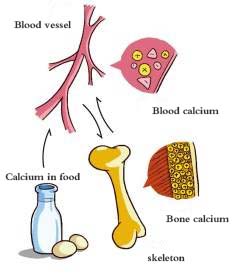Blood calcium and ionized calcium, how to check how to measure, one box in one step
You may sometimes experience tetany and trembling In life, and you may also experience muscle weakness. All of this makes us think, why? Welcome to today's forum, the hot cause of blood calcium!

So what is blood calcium? What is ionized calcium? What is the connection with our body, do we need to understand? The answer is yes.
Almost all blood calcium exists in plasma, and blood calcium mainly refers to plasma calcium. Plasma calcium has ionized calcium and bound calcium. Only ionized calcium directly plays a physiological role. It is in dynamic equilibrium with bound calcium and is affected by blood pH. Blood calcium level is related to many important physiological functions, too high or low will affect normal physiological functions.
The blood calcium concentration is relatively stable, and the normal value is 2.25-2.75 mmol/L. Ionized calcium has the effect of reducing neuromuscular irritability. Therefore, when blood calcium is lower than 1.75 mmol/L or ionized calcium is lower than 0.875 mmol/L, neuromuscular irritability increases, and tetany may occur. In hypercalcemia, the excitability and conductivity of the myocardium are reduced, and hypercalcemia can also cause damage to the kidneys.
If you consider from the clinical significance, there are several aspects that need attention:
Elevated serum calcium: Hypercalcemia is relatively rare. The increase in blood calcium can be caused by increased osteolysis, increased intestinal absorption, and increased absorption of calcium by the kidneys. It can be seen in the following situation.
- Primary hyperparathyroidism, which produces too much parathyroid hormone, is more common in parathyroid adenomas. X-ray examination can show osteoporosis.
- Ectopic secretion of parathyroid hormone: Some malignant tumors can secrete parathyroid hormone, such as kidney cancer, bronchial cancer, etc. However, if no primary cancer is found, it is difficult to diagnose.
- Bone metastasis of malignant tumor is the most common cause of elevated blood calcium. Multiple myeloma, breast cancer, lung cancer, etc. accompanied by bone metastasis have a large amount of bone destruction, and the kidneys and intestines cannot clear too much calcium in time, causing hypercalcemia.
- Vitamin D poisoning is mostly caused by the treatment of hypoparathyroidism or the prevention of rickets, and the long-term use of vitamin D in large amounts, but this situation can be avoided.
- Others: In addition, hypercalcemia can also be seen in sarcoidosis, adrenal insufficiency, acute renal insufficiency, acidosis, dehydration, etc.
Decreased serum calcium; hypocalcemia is more common clinically, especially in infants and young children.
- Hypoparathyroidism: It can be seen in cases of primary hypoparathyroidism, after thyroidectomy, and parathyroid injury during radiotherapy for thyroid cancer. Serum calcium can drop below 1.75 mmol/L, and blood phosphorus can increase.
- Vitamin D deficiency: Common causes include vitamin D deficiency in food, low sunlight exposure, and digestive system diseases that lead to vitamin D deficiency. When vitamin D is lacking, calcium and phosphorus are less absorbed from the intestines, leading to lower blood calcium and phosphorus. The blood calcium lowering chakra causes secondary hyperparathyroidism, which can maintain the blood calcium at a near-normal level, but a large amount of phosphorus is excreted from the kidneys, causing a decrease in blood phosphorus and a decrease in the product of calcium and phosphorus. Vitamin D deficiency in infants and young children can cause rickets, and adults can cause rickets.
- Neonatal hypocalcemia: It is one of the common causes of convulsions in the neonatal period, which usually occurs within one week after birth.
- Long-term low-calcium diet or malabsorption: In severe celiac disease, calcium in food combines with unabsorbed fatty acids to form calcium soap, which is excreted from the body, resulting in low calcium.
For clinical diagnosis, the situation is very complicated and there are many incentives. However, there is a kit for testing in the experiment, which is easy to operate and has clear results. It can quickly determine the free calcium concentration in plasma, and then perform correlation by determining the free calcium concentration. Analysis, this is CheKine™ Blood Calcium Colorimetric Assay Kit.
CheKine™ Blood Calcium Colorimetric Assay Kit provides a simple test method to detect the free calcium content in plasma. This kit is used to detect the concentration of free calcium in the blood. In the determination, the free calcium in the plasma reacts with GBHA in a strong alkaline solution to form a red calcium-GBHA complex with an absorption peak at 520 nm. The free calcium concentration can be calculated by measuring the light absorption value of this wavelength.
With a box in hand, everything is worry-free. CheKine™ Blood Calcium Colorimetric Assay Kit helps your scientific research road. There are only convenient, fast and efficient advantages. I think about all the aspects that can be considered for you. The rest The operation is up to you!
| product name | Cat No. | Size | Note |
| CheKine™ Blood Calcium Colorimetric Assay Kit | KTB2120 | 96 T | Inquiries about multiple size and large size |











